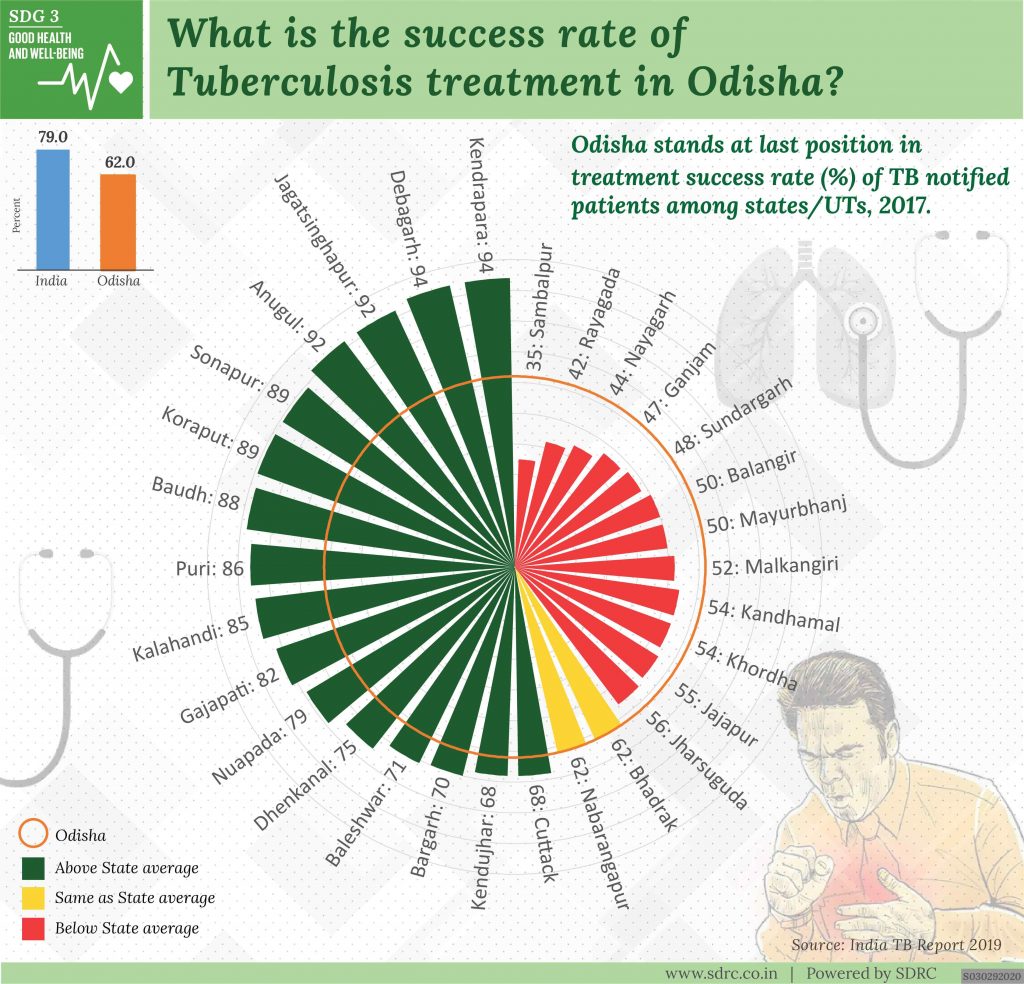Unable to control incessant cough, severe chest pain and profuse night sweating, Duba Sethi, a resident of Charmal village of Sambalpur, went to the local PHC for a check-up. He was diagnosed with infiltrative tuberculosis (TB) in his right lung and was prescribed medicine for 24 weeks. Upon feeling a little better on the third week, he stopped the treatment and began smoking beedis and cheroots. One day, he suddenly fell sick and died in three days.
Duba would have been alive, healthy and completely recovered if he had completed the entire medication course. TB, caused by Mycobacterium tuberculosis, most often affects the lungs. Although fatal when not treated properly, the disease is curable with proper medication and treatment. Early detection and prompt treatment are imperative for successful treatment and containing transmission.
However, the emergence of multidrug-resistance TB is a leading public health problem that endangers improvement in care and control of the disease. Drug resistance arises because:
i) patients skip the entire medication course
ii) unsuitable treatment regimens are administered
iii) improper antibiotics are used in patients
What is the treatment success rate of TB?
The treatment success rate of TB = the number of registered cases that were cured ÷ the total number of new registered cases x 100
The treatment success rate is calculated based on the results of the treatment for each patient. The World Health Organization recommends 85% treatment success rate for all TB cases as an indicator of TB control.
What is the treatment success rate of Odisha?
As per India TB report 2019, Odisha stands at last position in treatment success rate (%) of TB notified patients among all states and UTs as in 2017. Odisha has a success rate of 62%, while the national rate is 79%.
As many as 12 districts are below state average, with Sambalpur (35%), Rayagada (42%), and Nayagarh (44%) at the bottom three.
How TB spreads?
- Mycobacterium tuberculosis spread through human transmission via microscopic droplets when an infected person coughs, speaks, spits, sneezes, and laughs.
- A person with weak immunity can contract the disease when they inhale the droplets containing the bacteria.
What are the symptoms of TB?
A person should see a doctor if they experience:
- chronic cough, lasting at least three weeks
- blood-laced phlegm
- loss of appetite and weight
- weakness and being unwell
- swelling in the neck
- fever on regular basis
- night sweats
- chest pain
How TB can be successfully treated?
The disease can be successfully treated with medicine. It is, however, important that a patient completes the entire course of the drug therapy. Not following the proper course and medication can cause the disease to mutate and become resistant to the most powerful first-line anti-TB medications (drugs).
What needs to be done to prevent TB?
The disease can be prevented by the following ways:
- TB patients should always cover their mouths with masks or kerchiefs so that the droplets don’t spread through the air when they cough or sneeze.
- They should refrain from going to work, school or large social gatherings and avoid close contact till complete recovery.
- Infants need to be immunized with Bacillus Calmette-Guérin vaccine, or BCG.
TB is one of the deadliest infectious killers in the world. Every day, more than 4,000 people lose their lives to this preventable and curable disease and nearly 30,000 people contract the deadly disease. Since 2000, concerted efforts around the world to fight the disease have saved nearly 58 million lives.
Let’s pledge on this World TB Day 2020 to make Odisha TB free by ensuring at least 85% treatment success rate. As the theme of the day goes – ‘It’s time’.
Download the snapshot here.




